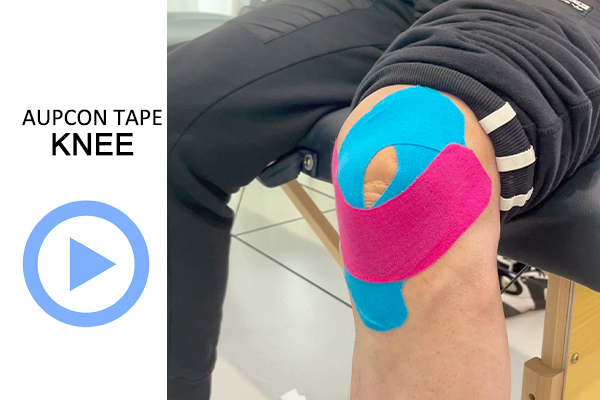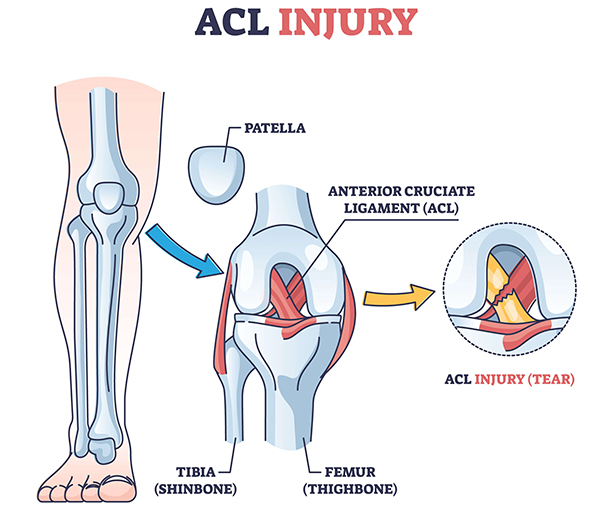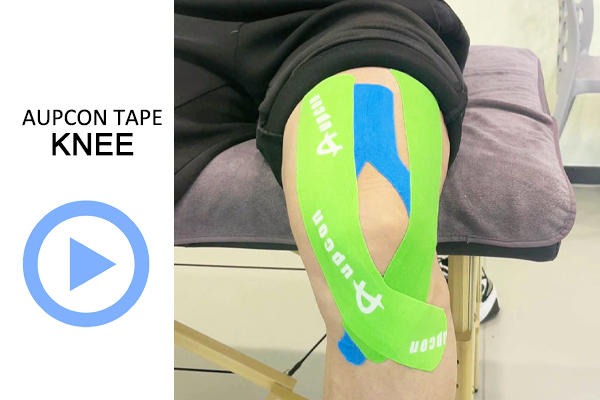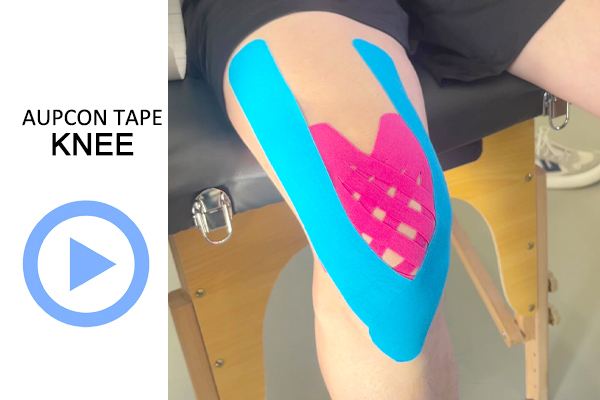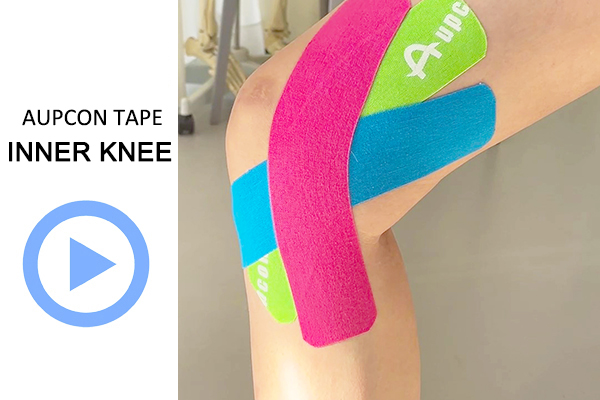Wie verwendet man Kinesiologie-Tape bei einer ACL-Verletzung?
ACL-Verletzung
Das vordere Kreuzband (ACL) ist eine wichtige Struktur, die die Vorderseite des Kniegelenks stabilisiert. Menschen, die hochintensive Sportarten wie Fußball, Rugby und Basketball ausüben, erleiden häufig diese Verletzung. Eine ACL-Verletzung kann das Knie sehr instabil machen. Wenn sie nicht behandelt wird, kann sie zu mehreren Folgeproblemen führen, darunter wiederholte Verstauchungen, Patellaspain, A Meniskusriss, und Schäden an anderen wichtigen Strukturen. Letztendlich kann dies den Alterungsprozess des Gelenks beschleunigen und zur Entstehung von Arthrose führen.
In diesem Artikel wird erläutert, wie Kinesiologisches Tape kann zur Behandlung von ACL-Verletzungen und zur Linderung der damit verbundenen Symptome eingesetzt werden.
TIPPS ZUM TAPEN VON KINESIOLOKEN
- Reinigen Sie Ihre Haut vor dem Anlegen, um die Lebensdauer des Kinesiologie-Tapes bei einer ACL-Verletzung zu verlängern.
- Um einen sicheren Sitz zu gewährleisten, schneiden Sie die vier Ecken mit einer Kinesiologie-Tape-Schere ab, um ein Herunterfallen zu verhindern.
- Berühren Sie beim Aufbringen des Klebebands nicht die Klebefläche, um die Klebrigkeit nicht zu beeinträchtigen.
- Nach dem Anbringen wischen Sie das Kinesiologie-Tape für ACL-Verletzungen mehrmals ab, damit es fest haftet.
- Vermeiden Sie eine längere Verwendung des Knie-Therapie-Tapes und ersetzen Sie es innerhalb von 3 bis 7 Tagen.
- Wenn Sie eine offene Wunde am Oberschenkel haben, kleben Sie kein Knie-Therapieband auf die Stelle.
Wie verwendet man Kinesiologie-Tape bei einer ACL-Verletzung?
Befestigen Sie zunächst den ersten Streifen des Knie-Therapie-Tapes oberhalb der Kniescheibe und ziehen Sie ihn nach unten, um ihn um die rechte Seite zu wickeln.
Befestigen Sie den zweiten Streifen des Knie-Therapie-Tapes auf ähnliche Weise und ziehen Sie ihn nach unten, um ihn um die linke Seite zu wickeln.
Dehnen Sie dann den letzten Streifen des Knie-Therapie-Tapes 75%, um ihn um die Kniescheibe zu wickeln und die Anpassung abzuschließen.
Was ist ein Kinesiologie-Tape für eine ACL-Verletzung?
Die Funktion von Kinesiologie-Tape bei Verletzungen des vorderen Kreuzbandes
Schmerzmodulation: Therapeutisches Knieband kann die Wahrnehmung von Schmerzsignalen wirksam reduzieren und so Schmerzen lindern.
Unterstützung: Durch das Anheben der Haut sorgt es für äußere Stabilität.
Schwellungen reduzieren: Das Anheben der Haut fördert den Flüssigkeitsabfluss und reduziert Schwellungen während der akuten Phase.
Kinesiologie-Tape zur Anwendung bei ACL-Verletzungen
Kinesiologie-Tape wird häufig zur Behandlung von Meniskusrissen verwendet, Knieschmerzen, Läuferknie, Patellasehnenentzündung, und Verstauchungen.
Kinesiologie-Tape aus Baumwolle
bei einer ACL-Verletzung
→
Häufig gestellte Fragen
Eine ACL-Verletzung bezeichnet eine Schädigung oder einen Riss des vorderen Kreuzbandes, der häufig bei sportlichen Aktivitäten auftritt, wenn das Kniegelenk einer übermäßigen Drehung, einem plötzlichen Stopp oder einem Aufprall ausgesetzt ist. Es ist eines der anfälligsten Bänder im Kniegelenk und kann zu Gelenkinstabilität, Schmerzen, Schwellungen und sogar zu sekundären Schäden am Meniskus oder Knorpel führen.
Auf jeden Fall. Als therapeutisches Knieband mit physiotherapeutischer Wirkung besteht es aus medizinischen Materialien, ist latexfrei, bequem, atmungsaktiv, hautfreundlich und wasserdicht. Sie können die Anweisungen in diesem Artikel befolgen und es in Verbindung mit dem therapeutischen Knieband von Aupcon zur Behandlung von ACL-Verletzungen verwenden.
Das Aupcon-Kinesiologie-Tape für ACL-Verletzungen kann in der Regel 3–5 Tage lang verwendet werden. Bei Bereichen mit großem Bewegungsumfang wie dem Knie empfehlen wir jedoch, das Tape täglich zu wechseln, um eine effektive Haftung zu gewährleisten und den Anwendungsbereich sauber und hygienisch zu halten, um Bakterienwachstum zu verhindern.
Dies ist nur für Personen mit leichten Rissen und geringer körperlicher Aktivität geeignet.
Art der Verletzung: Verstauchung Grad I oder II
Grad I (leicht): Das Band ist gedehnt, aber die Fasern sind intakt. Das Kniegelenk ist stabil.
Grad II (mittelschwer): Teilweiser Riss der Bänderfasern. Leichte bis mäßige Laxität im Kniegelenk.
In diesen Fällen ist die strukturelle Kontinuität des Bandes noch intakt, und es kann durch konservative Behandlung mit Narbenbildung heilen. Die Verwendung von Kinesiologie-Tape bei einer ACL-Verletzung kann bei der konservativen Behandlung helfen, und es muss durch aktives Rehabilitationstraining ein optimales Umfeld geschaffen werden, um Ihnen zu helfen:
Muskeln stärken: Konzentrieren Sie sich auf die Stärkung des Quadrizeps an der Vorderseite des Oberschenkels und der hinteren Oberschenkelmuskulatur. Starke Muskeln sind die “dynamischen Stabilisatoren” des Kniegelenks, die eine beeinträchtigte Funktion des vorderen Kreuzbandes weitgehend ausgleichen und einer Instabilität des Knies vorbeugen können.
Bewegungsumfang wiederherstellen: Stellen Sie die Beugung und Streckung des Knies so früh wie möglich innerhalb eines schmerzfreien Bereichs wieder her, um Gelenksteifigkeit zu vermeiden.
Propriozeptives Training: Führen Sie Gleichgewichtsübungen durch (z. B. auf einem Bein stehen), um die Kontrolle des Gehirns über die Position und Bewegung des Kniegelenks wiederherzustellen.
Behandlung von Schwellungen und Schmerzen: Verwenden Sie Methoden wie Eispackungen, Druck und therapeutisches Tape für das Knie.
Andere Körperteile
Sie haben bereits etwas über die Tapeverband-Behandlung bei Kreuzbandverletzungen gelernt. Nun interessieren Sie sich wahrscheinlich auch für verwandte Erkrankungen wie Meniskusrisse, Verletzungen des medialen Seitenbandes, Und Verletzungen des seitlichen Seitenbandes. Bitte informieren Sie sich weiter über Aupcon‘s ‘So verwenden Sie Kinesiologie-Tape‘Tutorial-Reihe.

